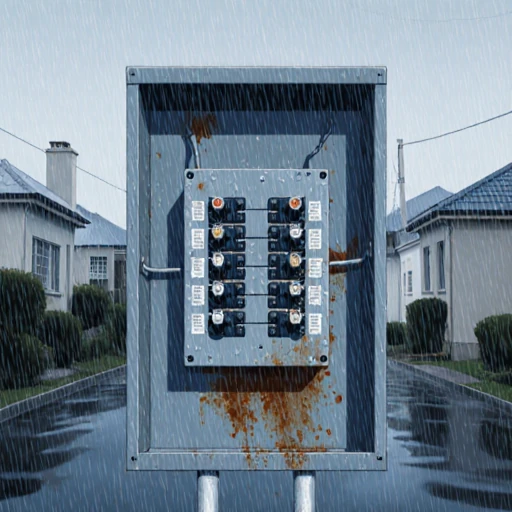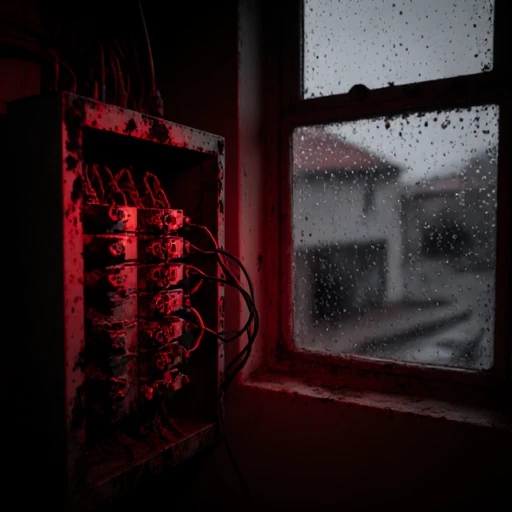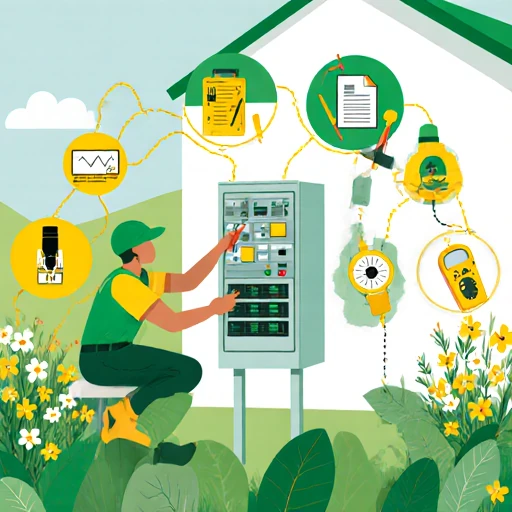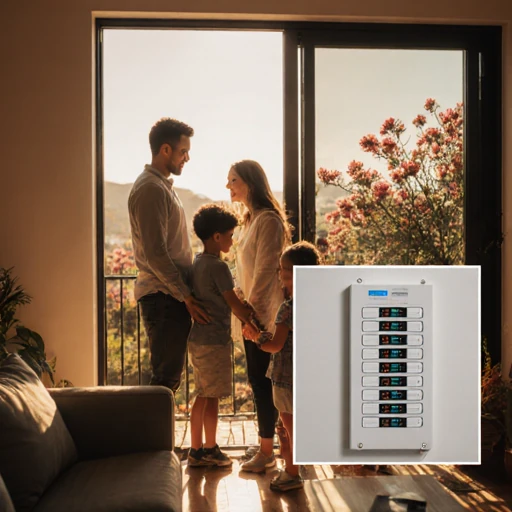As the last chills of winter fade in Cape Town, with August bringing those final rainy spells and cooler nights, many homeowners breathe a sigh of relief. But before you fully embrace the blooming spring ahead, it’s wise to pause and check on something crucial lurking behind the scenes: your home’s electrical distribution board. Often tucked away in a garage or utility room, this unsung hero manages the flow of electricity throughout your house. Yet, the harsh winter conditions unique to our city, from relentless downpours to sudden storms, can leave it vulnerable to damage that might not be immediately obvious.
Imagine flipping a switch only to be met with flickering lights or, worse, a complete outage just as you’re settling in for the evening. These issues often stem from winter’s toll on your electrical systems. In this article, we’ll dive into the specific challenges Cape Town residents face, explore why ignoring them can lead to bigger headaches, and arm you with practical electrical fault finding tips to spot and address problems early. Whether you’re in a cozy Victorian in Woodstock or a modern flat in Sea Point, understanding these signs can help keep your home safe and powered up as we transition into warmer days.

The Hidden Challenges Winter Poses to Your Electrical Distribution Board
Winter in Cape Town isn’t just about bundling up against the cold, it’s also a season of heavy rains, strong winds, and occasional thunderstorms that can wreak havoc on your home’s electrical infrastructure. The electrical distribution board, sometimes called the DB board or fuse box, is the central hub where power from the grid is divided into circuits for lights, appliances, and outlets. It’s designed to protect your home by tripping breakers when there’s an overload or fault, but prolonged exposure to winter elements can compromise its integrity.
One major issue is moisture ingress. Cape Town’s winter rainfall, often accompanied by high humidity, can seep into cracks or poorly sealed enclosures around the distribution board. This moisture leads to corrosion on metal components like bus bars and terminals, weakening connections over time. According to reliable sources on electrical maintenance, such as guidelines from professional electricians, water can cause insulation breakdown, creating paths for electricity to arc unexpectedly.
Another common problem is overloading from increased energy use. With heaters, electric blankets, and geysers running more frequently to combat the chill, circuits can strain beyond their capacity. This is especially prevalent in older homes in areas like Observatory or Rondebosch, where wiring might not be up to modern standards. Storms add to the mix with lightning strikes or power surges, which can fry sensitive parts inside the electrical distribution board.
Then there’s the issue of temperature fluctuations. As nights dip below 10 degrees Celsius, materials in the board contract, potentially loosening wires or causing micro-cracks in insulation. Combined with the city’s frequent load shedding, which stresses the system with sudden power restorations, these factors create a perfect storm for faults. Homeowners might notice subtle signs like unusual warmth around the board or a faint musty smell, but without proper inspection, these can escalate unnoticed.
In essence, the challenge is spotting these winter-induced damages before they disrupt daily life. Many Cape Town residents overlook their electrical distribution board until a problem forces attention, but proactive checks can reveal issues like rusted breakers or discolored wiring that signal trouble ahead.
The Risks of Ignoring Winter Damage to Your Electrical Systems
Leaving winter damage unchecked isn’t just inconvenient, it can lead to serious, costly, and even dangerous outcomes. Picture this: a corroded connection in your electrical distribution board sparks during a spring braai, causing a short circuit that knocks out power to your entire kitchen. Or worse, it evolves into an electrical fire, a risk that’s heightened in homes with wooden structures common in Cape Town’s heritage areas.
Safety hazards top the list of concerns. Faulty electrical distribution boards can result in electric shocks, especially if moisture has created conductive paths on exposed wires. Statistics from electrical safety organizations highlight that unresolved faults contribute to thousands of home incidents annually worldwide, and in a rainy climate like ours, the odds increase. For families with children or elderly members, this means potential accidents from tripping in the dark during outages or handling wet appliances.
Financially, the fallout can be steep. A damaged distribution board might require extensive repairs, including rewiring sections of your home, which disrupts your routine for days. If surges from winter storms have harmed appliances like fridges or TVs, replacement costs add up quickly. During load shedding peaks, an unreliable board exacerbates blackouts, forcing reliance on expensive generators or battery backups.

Energy inefficiency is another hidden cost. Corroded or loose connections increase resistance, making your system work harder and spiking electricity bills. In Cape Town, where tariffs are already a hot topic, this inefficiency hits the wallet hard. Environmentally, it means higher carbon footprints from wasted power, clashing with our city’s green initiatives.
Moreover, insurance complications arise. Many policies require proof of regular maintenance, and if a fault traces back to neglected winter damage, claims could be denied. Imagine dealing with flood-related electrical issues from a leaky roof, only to find your coverage falls short because the electrical distribution board wasn’t inspected.
The urgency is clear: as spring arrives, unaddressed winter wear can turn minor glitches into major crises, affecting your home’s safety, comfort, and value. It’s not about fear-mongering, but recognizing that a small investment in awareness now prevents larger regrets later.
Step-by-Step Electrical Fault Finding Tips for Your Cape Town Home
Now that we’ve highlighted the problems and their potential impacts, let’s shift to empowerment. You don’t need to be an expert to perform basic electrical fault finding, but always prioritize safety by switching off the main power before any close inspection. If you’re unsure, consult a professional right away. Here’s a clear, step-by-step approach tailored for Cape Town homes transitioning out of winter.
First, conduct a visual inspection of your electrical distribution board
Open the panel carefully (with power off) and look for obvious signs of damage. Check for rust or corrosion on breakers and terminals, often caused by moisture from winter rains. Discolored or melted plastic around connections indicates overheating from overloads. Also, sniff for burning odors or musty smells, which suggest arcing or mold growth.
Next, test your circuit breakers
Turn the main switch back on, then flip each breaker off and on one by one. Listen for unusual clicking or buzzing sounds, which could point to faulty mechanisms. If a breaker trips immediately upon resetting, that’s a red flag for a persistent fault in that circuit, possibly from water-damaged wiring.
Third, check for moisture-related issues
In Cape Town’s damp winters, water can pool near the board if it’s in a basement or exterior wall. Use a flashlight to spot water stains or condensation inside the enclosure. Dry any visible moisture with a cloth, but never use water or cleaners near electrical components. Consider installing a dehumidifier in prone areas for ongoing protection.
Fourth, monitor your home’s electrical behavior
Flickering lights or dimming when appliances run might signal loose connections strained by winter contractions. Frequent trips during high-use times, like evenings with heaters on, often trace back to overloaded circuits in the distribution board. Keep a log of these occurrences to identify patterns.
Fifth, use basic tools for deeper fault finding
A non-contact voltage tester can confirm if power is flowing correctly without touching wires. For ground faults common after rainy seasons, test outlets with a plug-in circuit analyzer. If you suspect surges from storms, inspect for charred plugs or appliances that suddenly fail.
Sixth, address common winter-specific faults
For instance, if lightning was an issue, verify surge protectors are intact. In older Cape Town homes, outdated boards with fuses instead of breakers are more susceptible, so plan an upgrade if yours is over 20 years old.
Finally, schedule seasonal checks
As spring approaches, clean dust from the board with compressed air (power off), and ensure vents are clear to prevent heat buildup. These steps provide immediate value by helping you catch issues early, restoring peace of mind.
Remember, while these tips are helpful for basic electrical fault finding, complex problems require expertise to avoid risks like shocks or fires.

Integrating Professional Support into Your Electrical Maintenance Routine
While DIY electrical fault finding offers a great starting point, some issues demand the precision and tools only a qualified electrician brings. For instance, when upgrading an outdated electrical distribution board or installing surge protection post-winter, professionals ensure compliance with Cape Town’s strict building codes, like those from the City of Cape Town’s electrical bylaws.
At ElectroGem, our team of certified electricians specializes in these seasonal transitions, offering thorough inspections that go beyond surface checks. We use advanced diagnostic equipment to pinpoint hidden faults, ensuring your system is resilient against future winters. By incorporating such expert services into your routine, you not only solve immediate problems but also enhance long-term reliability.
Think of it as partnering with locals who understand Cape Town’s unique climate challenges, from Atlantic seaboard winds to Table Mountain’s microclimates. This approach fits seamlessly into the solution framework, providing that extra layer of assurance without the guesswork.

A Brighter Spring Awaits with Proactive Care
As Cape Town shakes off winter’s grip and welcomes spring’s vibrancy, taking stock of your electrical distribution board ensures a smooth shift. By identifying problems like moisture damage, amplifying awareness of risks, following a structured fault finding process, and knowing when to seek professional help, you’re setting your home up for success.
Don’t let winter’s legacy linger, grab that flashlight and start your inspection today. Your safer, more efficient home will thank you, and who knows, you might even enjoy the satisfaction of nipping a potential issue in the bud. Stay powered, Cape Town!
Learn how Cape Town electricians prevent costly electrical faults with solar PV system & lightning protection earthing upgrades – read our recent article here…
